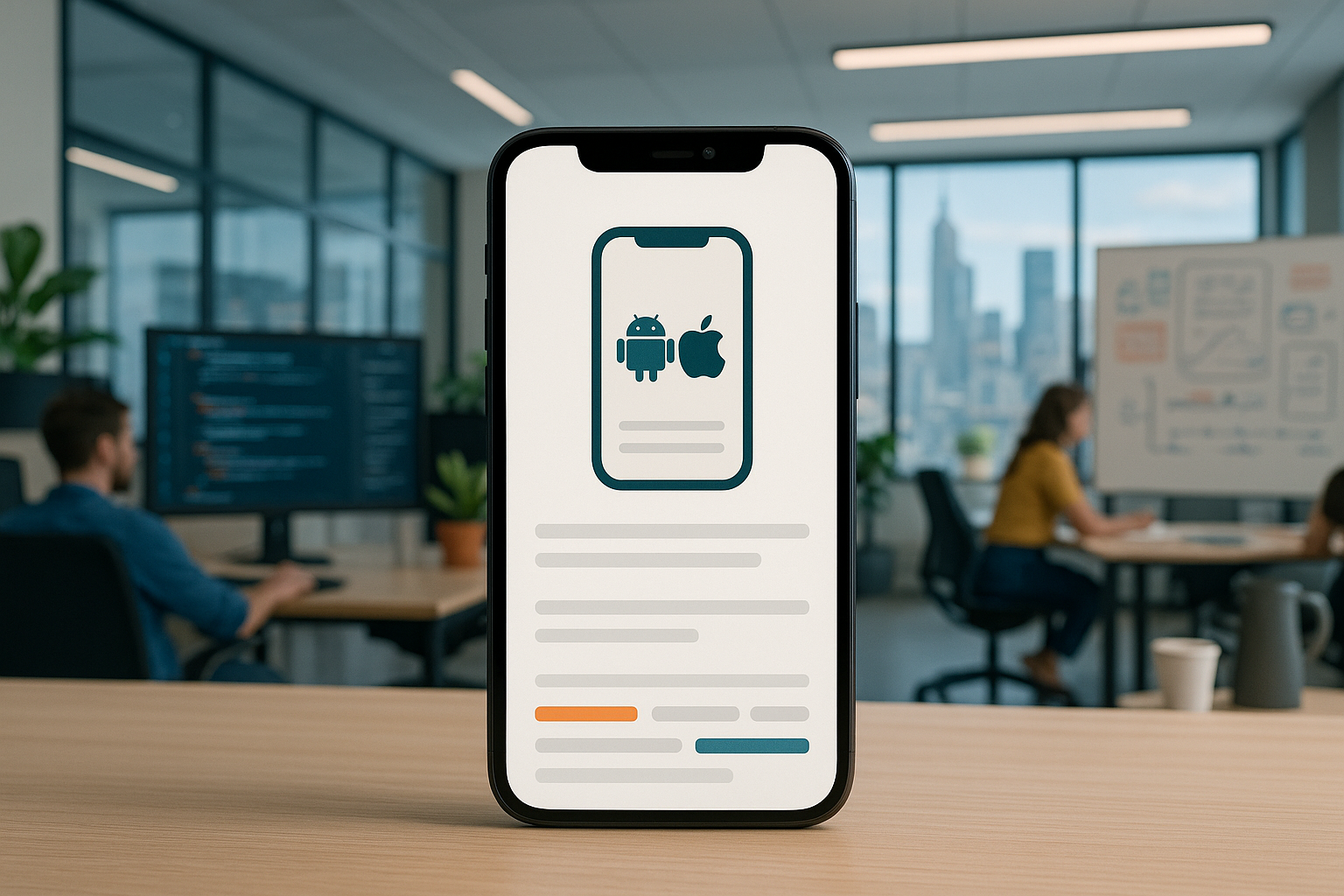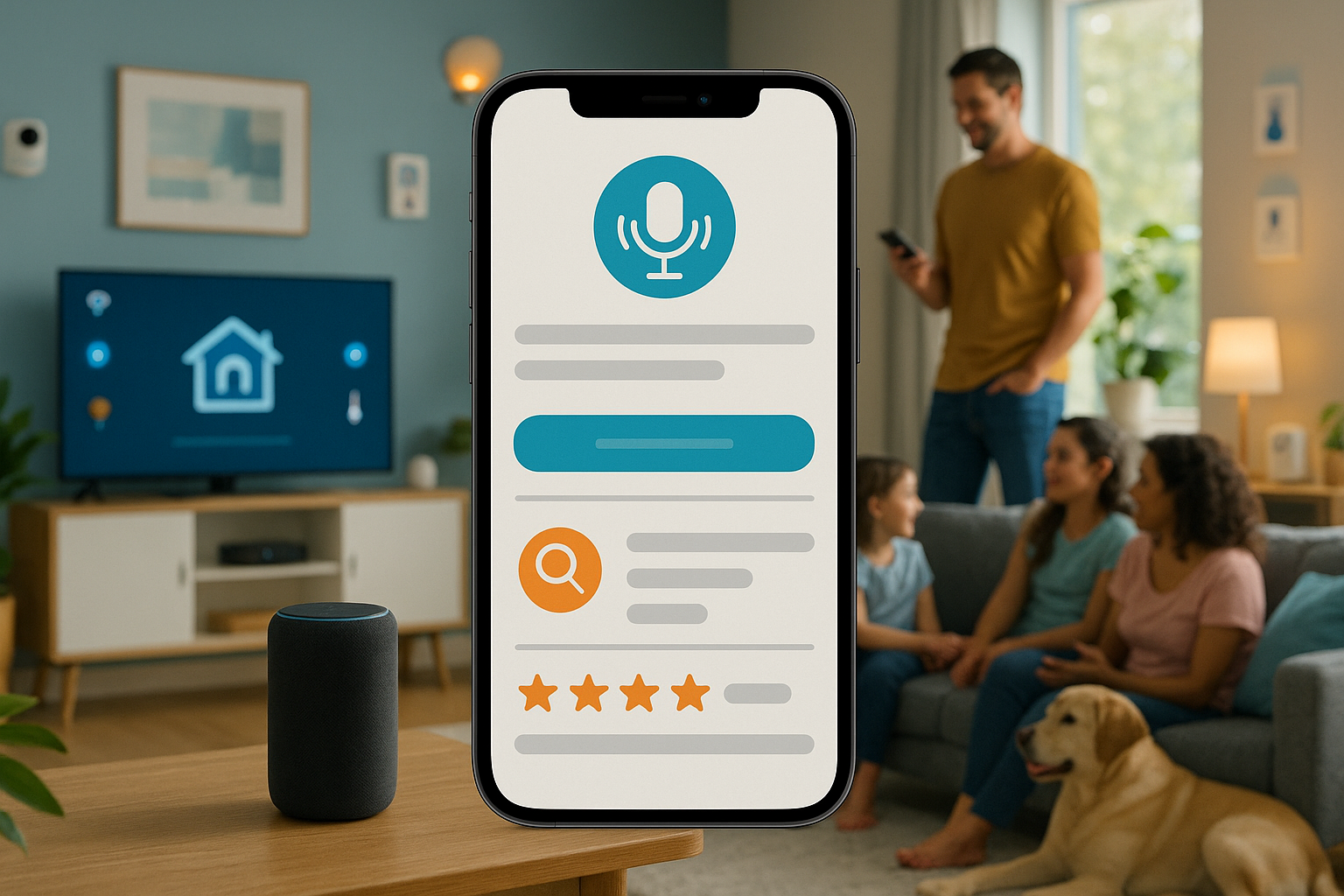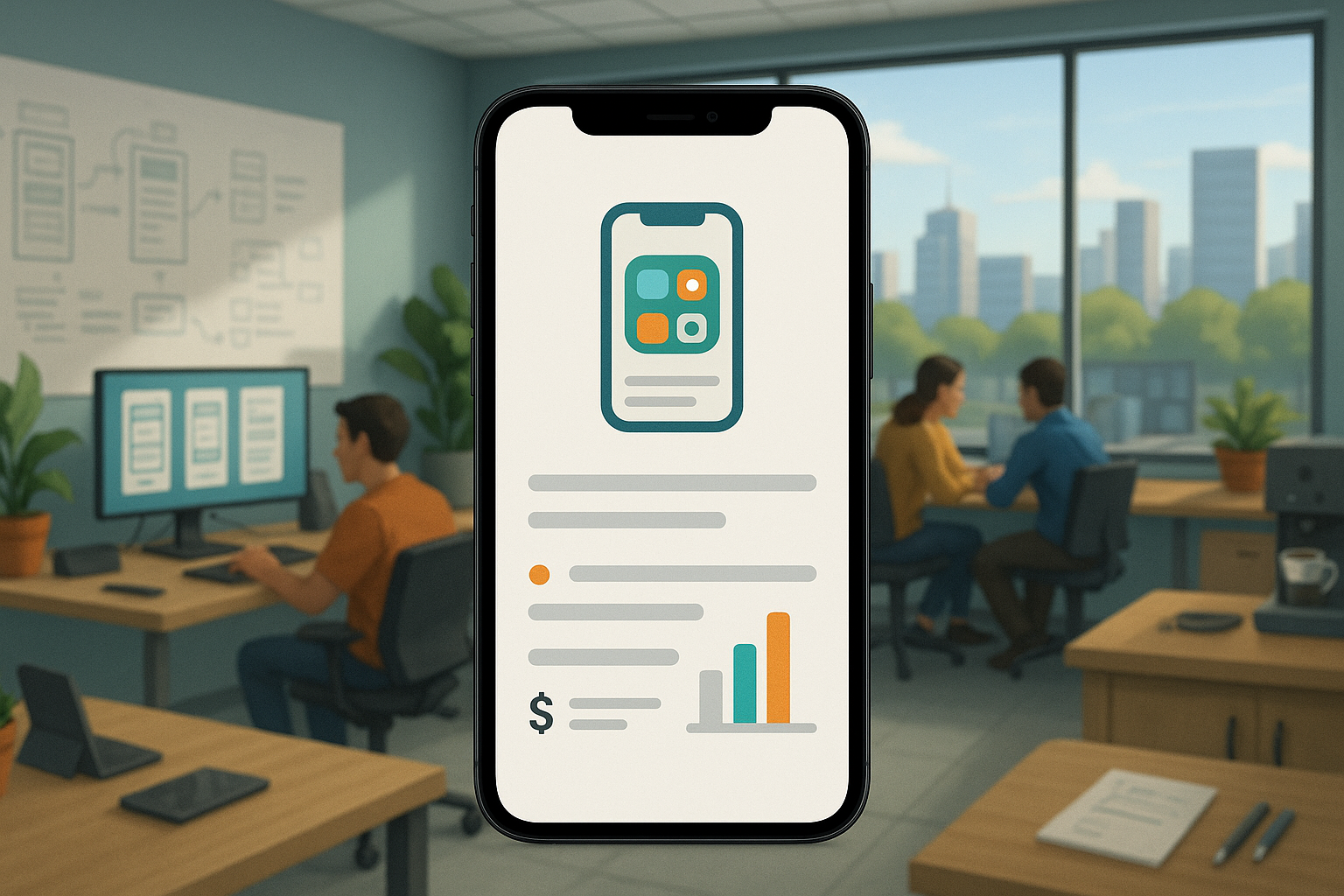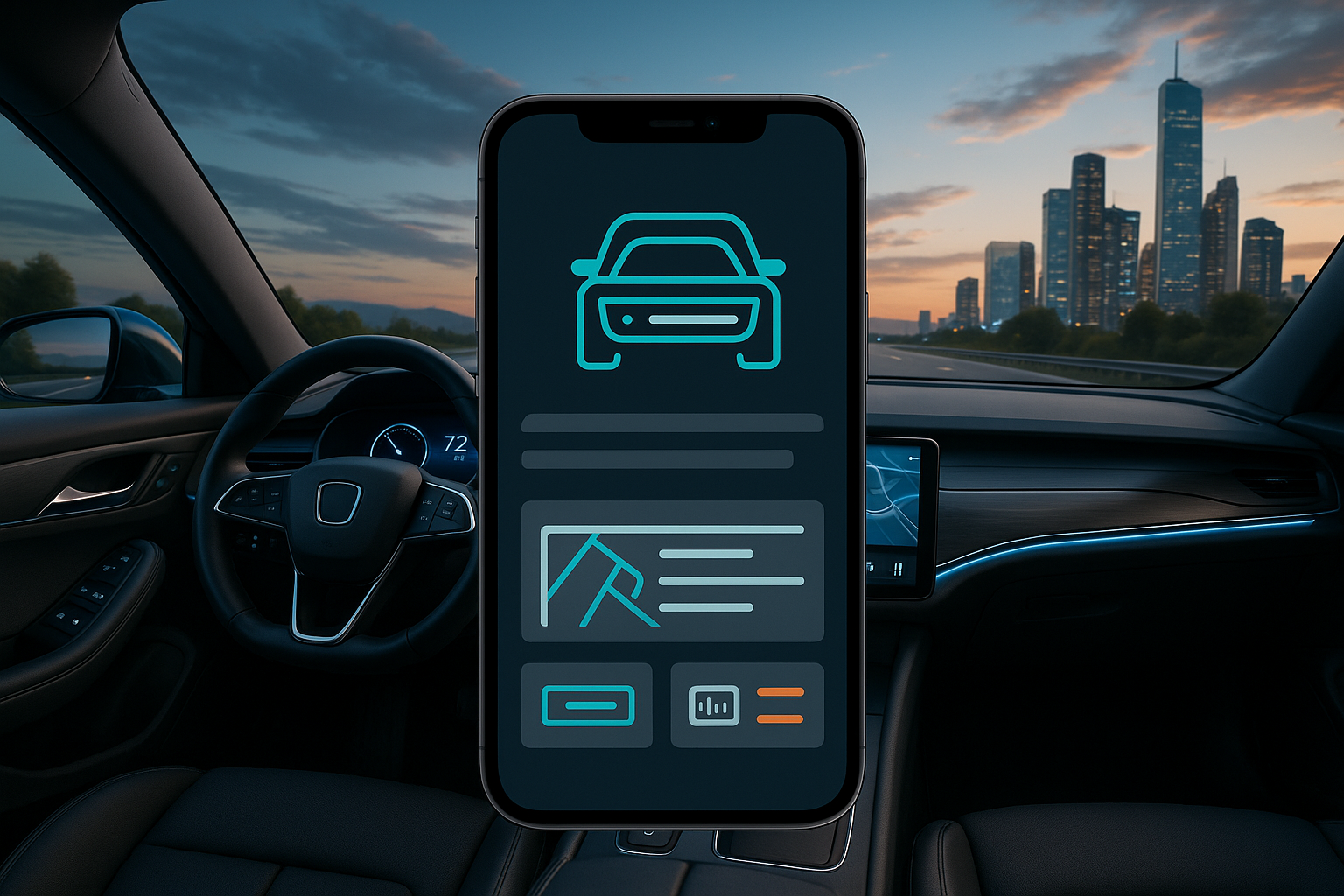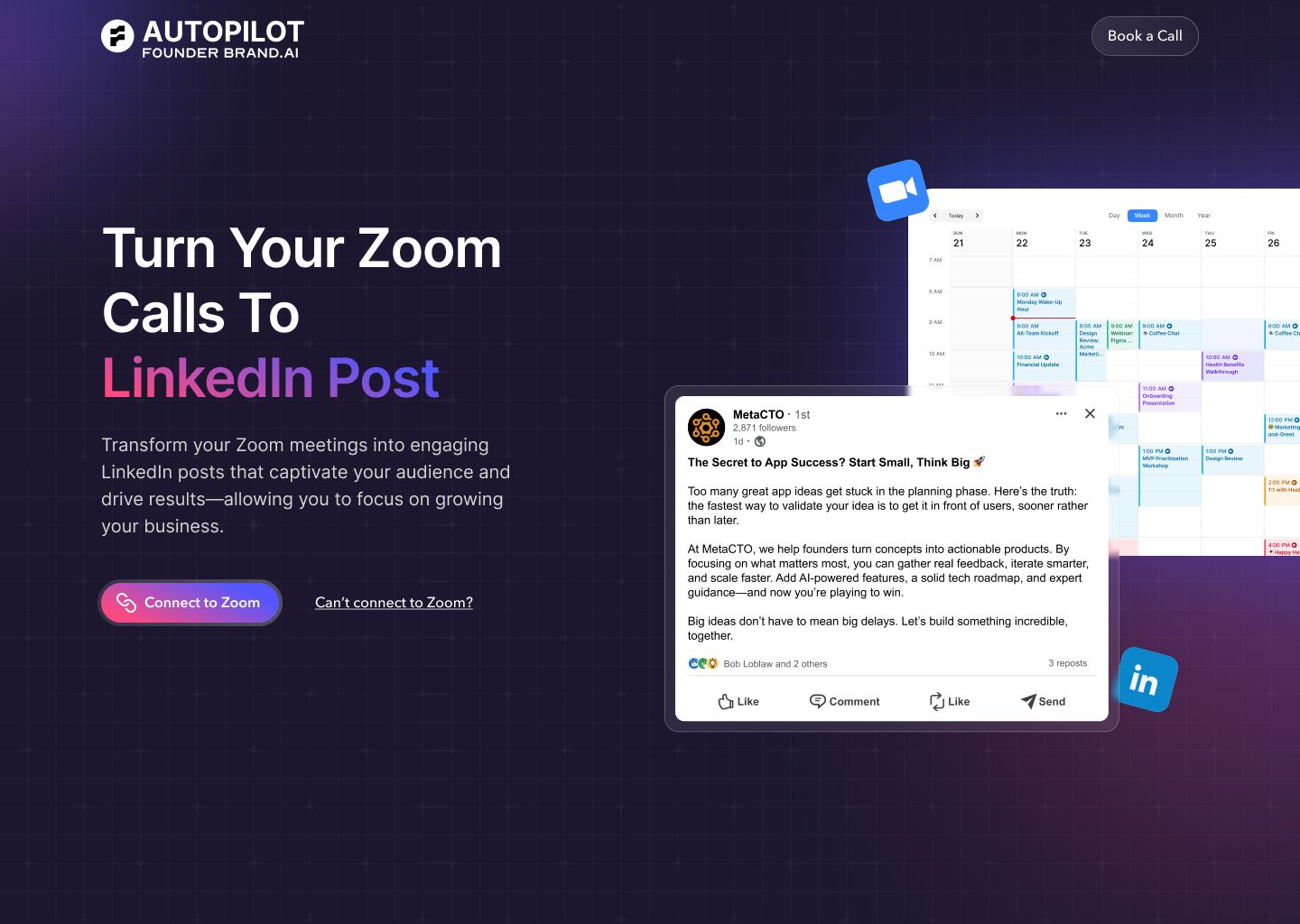Introduction
In today’s digital landscape, launching a mobile application means navigating the duopoly of Google’s Android and Apple’s iOS. Reaching your entire potential audience requires a presence on both platforms, but developing an app that performs flawlessly on each is a significant undertaking fraught with technical, financial, and strategic challenges. From managing fragmented device specifications on Android to adhering to Apple’s stringent design guidelines, building for both operating systems simultaneously can quickly overwhelm even the most prepared in-house teams.
This comprehensive guide will walk you through the critical aspects of Android and iOS app development. We will explore the inherent difficulties of building for both platforms, delve into the different development approaches you can take, provide a detailed breakdown of potential costs, and introduce the top development companies that can bring your vision to life.
As a leading AI-powered mobile app development firm in the US, we at MetaCTO have helped countless startups and SMBs navigate this complex journey. We specialize in transforming ambitious ideas into successful, high-growth mobile applications. Throughout this article, we will share insights from our 20 years of experience, demonstrating how a strategic partner can help you build, grow, and monetize your app on both Android and iOS, starting with a market-ready MVP in as little as 90 days.
What is an Android and iOS App?
At its core, an application for Android and iOS is a software program designed to function on two distinct mobile operating systems. Android, developed by Google, is an open-source platform used by a vast array of device manufacturers, from Samsung to OnePlus. iOS, developed by Apple, is a closed-source platform exclusive to Apple’s own hardware, such as the iPhone and iPad. This fundamental difference is the root of most development complexities.
The primary challenge lies in the fact that native programming languages cannot be streamlined across these platforms. To build a native Android app, developers typically use languages like Kotlin or Java. For a native iOS app, they use Swift or Objective-C. This means that to achieve a native presence on both platforms, a company must develop and maintain two entirely separate applications. This dual-track effort requires separate source code for each platform, effectively doubling the work, the cost, and the complexity of the project.
This inherent separation forces businesses to make a critical strategic decision: How do we efficiently build for both Android and iOS? The answer lies in choosing a development approach that aligns with the app’s goals, budget, and timeline. As we will explore, the options range from building two distinct native apps to using a single codebase with cross-platform or hybrid technologies. Each path has profound implications for performance, user experience, cost, and long-term maintenance.
Reasons It Is Difficult to Develop an Android and iOS App In-House
Attempting to build a sophisticated mobile app for both Android and iOS with an in-house team is an ambitious goal that presents a multitude of challenges. These hurdles span technical complexities, resource allocation, and strategic business management, often proving to be more than companies initially bargain for.
Technical and Design Hurdles
The technical landscape of mobile development is constantly shifting, and each platform brings its own unique set of difficulties.
- Device and OS Fragmentation: This is a particularly notorious challenge for Android development. Developers must ensure compatibility across a vast ecosystem of devices with different screen sizes, hardware configurations, and processor architectures. The need for compatibility with various device configurations and Android OS versions, which presents unique challenges like fragmentation, complicates testing and development significantly. Developers must ensure an app works well on every operating system to guarantee a high-quality user experience.
- Creating Intuitive UX/UI: Designing a user interface that provides a great user experience without faults is a crucial application development challenge. Users on iOS and Android have different expectations for navigation, design elements, and interactions. An app that simply copies its iOS design onto Android (or vice versa) will feel out of place and clunky. Crafting an experience that feels truly native to each platform requires deep expertise and careful design.
- Security Vulnerabilities: Mobile apps, especially those handling sensitive information, are prime targets for cyberattacks. Preventing data leaks or malware requires immense attention from a company’s IT security team. The Android OS, in particular, can present unique security vulnerabilities. Developers must be prepared to implement features like intelligent fraud detection and file encryption, and the risk of an app being removed from app stores for security lapses is a constant concern.
- Third-Party Integrations: Modern apps rarely exist in a vacuum. Integrating third-party APIs for services like payment gateways, social media logins, or analytics is a common requirement but also a common challenge. Ensuring these integrations are stable, secure, and performant across both platforms adds another layer of complexity.
- Accessibility: Mobile app developers need to constantly monitor Web Content Accessibility Guidelines (WCAG) to ensure their applications meet accessibility requirements at every stage. This is not just a matter of compliance but of ensuring all users can interact with the app.
Resource and Management Challenges
Beyond the code, developing for two platforms in-house strains a company’s financial and human resources.
- Finding Specialized Talent: Developing a native application requires teams of developers with specialized skills for each platform. Finding the right app developers with the necessary skills is challenging, especially when creating complex enterprise applications. The cost of hiring these specialists, particularly in the US, is substantial.
- High Costs and Long Timelines: Building and maintaining two entirely separate applications significantly increases development time, cost, and complexity. This lengthy process is due to creating different versions of the app with a separate codebase for each platform. When there is a tight timeline or a limited budget, native in-house development is often not a viable path.
- Project Management: Managing the mobile app development process and meeting tight deadlines is a challenge in itself. When managing two separate development tracks, the complexity multiplies. Coordinating feature parity, bug fixes, and release schedules for both iOS and Android requires meticulous planning and robust management.
- Funding and Budgeting: Simply figuring out the costs involved in mobile app development is a challenge, let alone securing the necessary funding. Initial in-house development might seem cheaper, but fixing bugs due to a lack of experience can lead to a price tag similar to hiring a professional agency.
Business and Market Challenges
Finally, even a perfectly engineered app can fail if it doesn’t navigate the competitive market.
- App Visibility and Promotion: With millions of apps in the Google Play and Apple App Stores, optimizing app visibility in a crowded market is one of the main challenges. Promoting a mobile app is one of the biggest mobile app development challenges, requiring a dedicated strategy for marketing and user acquisition.
- User Engagement and Adoption: Maintaining user engagement while implementing futuristic features under tight deadlines is a constant balancing act. Furthermore, getting new or existing customers to switch to a company’s mobile app platform over others can cause issues, especially for established companies or those targeting hard-to-reach demographics.
Hiring a development agency like us at MetaCTO can mitigate these risks. We provide the specialized teams, proven processes, and strategic oversight needed to navigate these challenges, allowing you to focus on your business while we handle the complexities of mobile app development.
Different Types of Android and iOS App Development
When deciding how to build your app for both Android and iOS, you have three primary approaches to consider: native, cross-platform, and hybrid. Each offers a different balance of performance, cost, and development efficiency. The right choice depends entirely on your app’s specific needs, complexity, and long-term goals.
Native App Development
Native development involves building two separate applications, one for iOS (using Swift/Objective-C) and one for Android (using Kotlin/Java). The code is written specifically for each operating system, allowing it to take full advantage of the platform’s features and capabilities.
Pros:
- Peak Performance: Native apps deliver premium, stellar performance. They are fast, responsive, and ideal for apps that are complex, require heavy data processing, or involve intense calculations like 3D games.
- Seamless OS Integration: Native apps offer seamless integration with device features. They can directly access file systems, cameras, microphones, GPS, proximity sensors, and other hardware specific to the mobile operating system. This allows for an enhanced user experience, as the app can interact with all functions on the device.
- Superior UX and Design: Native development allows for a customizable, intuitive, and highly refined user experience that aligns perfectly with platform-specific design guidelines. It also enables the immediate adoption of the latest OS design paradigms as soon as they are released.
- Enhanced Security: Native development is ideal for app security because native apps have tools for creating built-in security features, such as intelligent fraud detection and file encryption. They have direct access to the phone’s built-in security tools provided by Apple or Google, making them a strong choice for apps handling sensitive information.
- Comprehensive Offline Access: Native apps excel at implementing comprehensive offline functionality by leveraging platform-specific storage and data synchronization capabilities.
Cons:
- Higher Cost and Time: Building native apps results in a larger expense when launching on both Google Play and the App Store. Achieving broad customer reach requires developing and maintaining two entirely separate applications, which significantly increases development time and cost.
- Increased Complexity: Maintaining two distinct native codebases typically involves higher overall maintenance efforts to address OS updates, bug fixes, and feature enhancements independently for iOS and Android.
Cross-Platform App Development
Cross-platform development allows you to write a single, unified codebase that can be deployed on both iOS and Android. Frameworks like React Native and Flutter compile the shared code into native components for each platform.
Pros:
- Development Efficiency: A single codebase for multiple platforms means the app is often ready for users more quickly. This approach is typically more cost-effective, needing only one development team.
- Near-Native Experience: Modern cross-platform tools enable the creation of high-quality user experiences that can look, feel, and perform very similarly to native applications. These frameworks are capable of building complex UIs and smooth animations.
- Simplified Maintenance: Core maintenance is easier. Updates and bug fixes to the shared code apply to all platforms, simplifying the ongoing maintenance of core features.
- Wider Audience Reach: You can launch on both iOS and Android simultaneously with a unified development effort, allowing wider audience reach with less effort.
- Robust Offline Functionality: Cross-platform frameworks provide robust solutions for offline functionality, allowing apps to store data locally and remain useful even without an internet connection.
Cons:
- Delayed Access to New Features: When Apple or Google releases brand-new OS features, cross-platform frameworks might need a short time to update before an app can easily use those newest capabilities.
- Platform-Specific Adjustments: To make an app feel perfectly at home on both iOS and Android, developers sometimes need to add small, platform-specific design or behavior adjustments.
- Slight Performance Trade-Off: For the most graphically intense games or apps that perform cumbersome calculations, a fully native app might still offer a slight performance advantage.
- Framework Dependency: This approach has a huge dependency on the type of framework used, which can have a distinct lack of features. Achieving as many features or working as fast as native development can be a challenge.
Hybrid App Development
Hybrid apps are essentially web applications wrapped in a native shell. They are built using standard web technologies like HTML, CSS, and JavaScript and then run inside a web browser component (a “WebView”) within the app.
Pros:
- Fast and Cost-Effective: Hybrid development is fast, efficient, and can be more cost-effective. Frameworks can speed up development and help release apps faster. If you have a limited budget or tight timeline, this approach can be ideal.
- Single Codebase: Like cross-platform, hybrid apps allow for using one main set of code for multiple platforms, which simplifies maintenance and allows for code reuse.
- Good Offline Support: Hybrid apps can effectively store data locally and use caching, allowing users to access features and content even without an internet connection.
- Web-Centric Updates: The hybrid approach can offer the lowest maintenance overhead for web-centric content updates, which are sometimes deployable without requiring app store resubmission.
Cons:
- Performance Limitations: Since hybrid apps run inside a web browser component, they may not be as fast or responsive as native or cross-platform apps. For extremely graphics-heavy games or very complex calculations, a native app will have a clear edge.
- Compromised UX: Hybrid mobile development sacrifices a lot of the native user experience and cannot replicate all the great features found in native development. While modern tools can create UIs that look and feel good, they may not perfectly match the platform’s native style.
- Scalability and Security Challenges: Hybrid architectures may present the most significant challenges for the long-term scalability of complex features and may necessitate a future rebuild. It is also crucial to follow strong web security practices to protect the app and user data.
Comparison of Development Approaches
| Feature | Native | Cross-Platform | Hybrid |
|---|---|---|---|
| Performance | Highest | High (Near-Native) | Moderate |
| User Experience | Best (Platform-Specific) | Good (Can mimic native) | Fair (Web-based) |
| Development Cost | Highest | Moderate | Lowest |
| Time to Market | Longest | Fast | Fastest |
| Codebase | Separate for each platform | Single, shared codebase | Single, shared codebase |
| Hardware Access | Full, immediate access | Excellent, with some delays for new features | Limited, via plugins |
| Best For | Complex, demanding apps | Most business apps | Simple, content-driven apps |
Modern cross-platform solutions have closed the gap significantly, offering a powerful balance of efficiency with a near-native feel. For many businesses, this approach provides the ideal mix of performance, cost, and speed.
Cost Estimate for Developing an Android and iOS App
Figuring out the costs involved in mobile app development is a challenge for any business. The final price tag is influenced by a multitude of factors, with app complexity being the most significant driver. As of 2024, the development costs for iOS and Android apps are virtually identical; the sophistication of the app is what truly defines the budget.
App Development Costs by Complexity
The cost can be broken down into three general tiers, though these figures do not include ongoing costs like app updates.
- Simple App: $5,000 to $50,000. These are apps with a basic user interface and a core set of simple features.
- Medium Complexity App: $50,000 to $120,000. These apps may include features like third-party API integrations, more complex backends, and more sophisticated UIs.
- Complex App: $120,000 to $300,000+. These are large-scale projects with advanced features like real-time synchronization, custom animations, complex visual objects, and use of smartphone hardware like Augmented Reality or NFC technology.
Cost Breakdown by Development Stage
The total budget is typically allocated across several key stages of the development lifecycle.
| Development Stage | Budget Allocation | Average Cost Range |
|---|---|---|
| Discovery & Strategy | 10% – 20% | $5,000 – $40,000+ |
| Design (UX/UI) | 15% – 25% | $5,000 – $50,000+ |
| Development (Coding) | 40% – 55% | $30,000 – $300,000+ |
| Testing & Deployment | 10% – 20% | $5,000 – $50,000 |
Hiring Costs and Team Location
The location of your development team has a massive impact on the overall cost.
- In-House US Developers: Hiring a US-based mobile app developer costs, on average, $110,000 per year. In top-tier cities, this can be much higher. For example, an iOS developer in San Francisco costs around $151,000 annually, while an Android developer in Seattle costs $131,000.
- Hourly Rates by Country: There is a vast difference in hourly rates globally.
- US/UK: $100 – $400 per hour
- India/Vietnam: $20 – $40 per hour
- Annual Salaries by Country:
- US: ~$110,000
- UK: ~$85,000
- France: ~$70,000
- India: ~$12,000
While choosing an in-house team or a cheaper overseas firm might seem to decrease costs initially, a lack of experience or communication barriers can lead to costly bugs, delays, and a final price tag similar to hiring a premium development company.
Ongoing Maintenance Costs
Launching the app is just the beginning. The industry average accepted cost to maintain software is roughly 15-25% of its original development cost, per year. These costs cover a wide range of essential services.
| Maintenance Task | Annual Cost Estimate |
|---|---|
| Bug Fixing | $1,000 – $5,000 |
| Security Updates | $1,000 – $2,500 |
| Performance Monitoring | $2,400 – $24,000 |
| Third-Party API Maintenance | $3,000 – $20,000 |
| Mobile Platform (iOS/Android) Updates | $5,000 – $30,000 |
| Server & Backend Maintenance | $5,000 – $25,000 |
| User Support & Feedback | $2,000 – $10,000 |
| Design & UX/UI Updates | $5,000 – $25,000 |
| Database Management | $5,000 – $15,000 |
| Licenses & Subscriptions | $1,000 – $10,000 |
When estimating the development cost of your future app, it’s crucial to factor in both the development team’s location and the app’s complexity, as both have a great impact on the overall cost.
Top Android and iOS App Development Companies
Choosing the right development partner is arguably the most critical decision you’ll make. A great partner does more than just write code; they provide strategic guidance, challenge assumptions, and become an integrated part of your team. Below is a list of top mobile app development companies, according to Clutch, a leading B2B ratings and reviews platform.
1. MetaCTO
As a premier AI-enabled mobile app development agency, we at MetaCTO are dedicated to helping businesses build, grow, and monetize their applications. With over 20 years of experience and more than 120 successful projects, we specialize in turning innovative ideas into market-ready products. Our 5-star rating on Clutch reflects our commitment to excellence and client success.
Integrating an app for both Android and iOS is hard because it requires more than just two separate development tracks; it demands a unified product strategy. Without it, you risk feature disparity, disjointed user experiences, and runaway maintenance costs. This is where our expertise shines. We act as your strategic technical partner, creating a clear technology and AI roadmap that aligns with your business goals. We handle every step of the process—from validating your concept with a 90-day MVP to building a scalable architecture, optimizing for growth with A/B testing, and implementing effective monetization strategies.
Our AI-powered approach allows us to deliver cutting-edge features, such as the computer vision AI we implemented for the G-Sight training app or the personalized AI coaching we built for the Bond dating CRM. We don’t just build apps; we build businesses.
Other Top App Development Companies
Here are other highly-rated companies that specialize in mobile app development, offering a range of price points and expertise.
| Company | Clutch Rating | Hourly Rate | Min. Project Size | Key Strengths |
|---|---|---|---|---|
| Atomic Object | 4.9 | $150 - $199 / hr | $25,000+ | Seamless integration with client culture, partnership-centric approach, transparent communication. |
| TechAhead | 4.9 | $25 - $49 / hr | $25,000+ | User-centric design, proactive communication, responsiveness, professionalism. |
| Goji Labs | 5.0 | $100 - $149 / hr | $25,000+ | Professional project management, timely delivery, adaptability, good value. |
| Cheesecake Labs | 4.9 | $50 - $99 / hr | $50,000+ | Strong project management, proactive communication, technical competence, integrity. |
| Dedicated Developers | 5.0 | $50 - $99 / hr | $25,000+ | Reliability, efficiency, outstanding project management, excellent value for money. |
| JPLoft | 5.0 | $50 - $99 / hr | $10,000+ | Advanced programming skills, complex feature integration, high-quality and intuitive apps. |
| Mercury Development | 5.0 | $50 - $99 / hr | $25,000+ | Seamless integration with in-house teams, strong communication, commitment to quality. |
| Emizen Tech | 4.9 | < $25 / hr | $5,000+ | On-time delivery, cost-effective solutions, customer responsiveness, adaptability. |
| Five Pack | 4.9 | $150 - $199 / hr | $50,000+ | Exceptional project management, responsiveness, partnership approach, cost-efficient solutions. |
| Utility | 4.8 | $100 - $149 / hr | $50,000+ | Strategic business insights, robust technical expertise, innovative solutions. |
Conclusion
Developing an application for both the Android and iOS platforms is a complex but necessary endeavor for any business looking to maximize its market reach. As we’ve covered, the journey is filled with critical decisions that impact everything from budget and timeline to the end-user experience. You must navigate the inherent difficulties of in-house development, choose the right approach—be it native, cross-platform, or hybrid—and carefully manage the significant costs involved from initial build to long-term maintenance.
Successfully launching and scaling a mobile app requires more than just technical skill; it demands a strategic partner who can provide expert guidance every step of the way. An experienced development agency brings proven processes, specialized talent, and the foresight to avoid common pitfalls, ensuring your project stays on track and on budget.
At MetaCTO, we do more than just build apps; we build successful digital products. Our AI-enabled approach and decades of experience allow us to create high-performing, scalable, and profitable applications that delight users and drive business growth. If you’re ready to turn your idea into a reality, let’s build your app the right way, from day one.
Talk with an Android and iOS expert at MetaCTO to integrate Android and iOS into your product and create a clear path to success.
